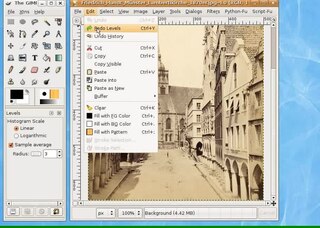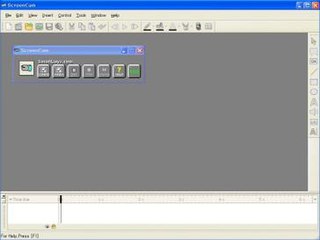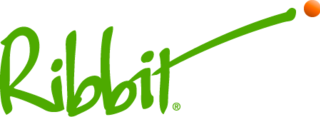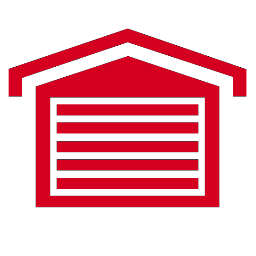
An intranet is a computer network for sharing information, easier communication, collaboration tools, operational systems, and other computing services within an organization, usually to the exclusion of access by outsiders. The term is used in contrast to public networks, such as the Internet, but uses most of the same technology based on the Internet protocol suite.

Skype is a proprietary telecommunications application operated by Skype Technologies, a division of Microsoft, best known for VoIP-based videotelephony, videoconferencing and voice calls. It also has instant messaging, file transfer, debit-based calls to landline and mobile telephones, and other features. Skype is available on various desktop, mobile, and video game console platforms.

A collaboration tool helps people to collaborate. The purpose of a collaboration tool is to support a group of two or more individuals to accomplish a common goal or objective. Collaboration tools can be either of a non-technological nature such as paper, flipcharts, post-it notes or whiteboards. They can also include software tools and applications such as collaborative software.

A screencast is a digital recording of computer screen output, also known as a video screen capture or a screen recording, often containing audio narration. The term screencast compares with the related term screenshot; whereas screenshot generates a single picture of a computer screen, a screencast is essentially a movie of the changes over time that a user sees on a computer screen, that can be enhanced with audio narration and captions.

Xfire was a proprietary freeware instant messaging service for gamers that also served as a game server browser with various other features. It was available for Microsoft Windows.
Digital reference is a service by which a library reference service is conducted online, and the reference transaction is a computer-mediated communication. It is the remote, computer-mediated delivery of reference information provided by library professionals to users who cannot access or do not want face-to-face communication. Virtual reference service is most often an extension of a library's existing reference service program. The word "reference" in this context refers to the task of providing assistance to library users in finding information, answering questions, and otherwise fulfilling users’ information needs. Reference work often but not always involves using reference works, such as dictionaries, encyclopedias, etc. This form of reference work expands reference services from the physical reference desk to a "virtual" reference desk where the patron could be writing from home, work or a variety of other locations.

Adobe Captivate is an authoring tool that is used for creating eLearning content such as software demonstrations, software simulations, branched scenarios, and randomized quizzes in Shockwave Flash and HTML5 formats.

Fraps is a benchmarking, screen capture and screen recording utility for Windows developed by Beepa. It can capture from software that uses DirectX and OpenGL, such as PC games.

ScreenCam is a screencast tool for Microsoft Windows that is used to author software demonstrations, software simulations, branched scenarios, and tutorials in .swf format. ScreenCam was primarily targeted at users who need to create video-oriented instructional materials who were not multimedia authors or video capture technicians. It was very easy to use, having a 'VCR-like' interface and requiring no knowledge of digital video editing, or the concept of 'frames' of a movie, because it used a different paradigm for creating the screen movies. It can also be used for creation of screencasts and conversion of Microsoft PowerPoint presentations to the Adobe Flash format.

Ribbit was a telecommunications company based in Mountain View, California. It was acquired by BT Group on July 29, 2008 for $105 million.

Google Wave, later known as Apache Wave, was a software framework for real-time collaborative editing online. Originally developed by Google and announced on May 28, 2009, it was renamed to Apache Wave when the project was adopted by the Apache Software Foundation as an incubator project in 2010.

HipChat was a web service for internal private online chat and instant messaging. As well as one-on-one and group/topic chat, it also featured cloud-based file storage, video calling, searchable message-history and inline-image viewing. The software was available to download onto computers running Windows, Mac or Linux, as well as Android and iOS smartphones and tablets. Since 2014, HipChat used a freemium model, as much of the service was free with some additional features requiring organizations to pay per month. HipChat was launched in 2010 and acquired by Atlassian in 2012. In September 2017, Atlassian replaced the cloud-based HipChat with a new cloud product called Stride, with HipChat continuing on as the client-hosted HipChat Data Center.
A Nirvana Phone was a marketing phrase coined by Citrix for a smartphone that could be docked with external displays and keyboards to create an alternative desktop or laptop computer system. It was to define a new category of mobile device with a capability beyond a conventional smartphone computer. The NirvanaPhone provides the processor, storage media, display adapter, communication channels, and operating system. The docking station provides power, and connectivity. To be useful the NirvanaPhone differs from a simple smartphone by having significant processing power, video output at high resolution, plus keyboard and mouse input. A smartphone is generally accepted as a device that has both mobile phone capability as well as an operating system that can run applications such as email, web browser, media player and personal organizers. The NirvanaPhone adds external monitor capability which could be a computer monitor, an HDTV, or a video projector. The dock could be a cradle, cable or a wireless connection. This allows the NirvanaPhone to run applications that can utilize a full-sized display for better readability or collaboration. Or in combination with a keyboard and mouse, perhaps using Bluetooth, the NirvanaPhone could act as a thin client connected to a virtual desktop for business use.
Redbooth is a web-based workplace collaboration tool and communication platform.

Adobe Presenter is eLearning software released by Adobe Systems available on the Microsoft Windows platform as a Microsoft PowerPoint plug-in, and on both Windows and OS X as the screencasting and video editing tool Adobe Presenter Video Express. It is mainly targeted towards learning professionals and trainers. In addition to recording one's computer desktop and speech, it also provides the option to add quizzes and track performance by integrating with learning management systems. Adobe Presenter was designed to replace the now discontinued Adobe Ovation software, which had similar functions.
Solaborate/ˈsōˈlabəˌrāte/ is a communication and collaboration platform for professionals and consumers. It allows them to do video calls, share documents, screencast and screenshare, remotely monitor their home or office. Solaborate is a combination of the words "social" and "collaboration". Solaborate has both software and hardware in the form of the HELLO Messenger and HELLO Communication Device.

The Microsoft Garage is a Microsoft program that encourages employees to work on projects about which they are passionate, despite having no relation to their primary function within the company. Employees from all divisions of Microsoft are free to take part in Microsoft Garage activities and small-scale innovation projects. The Microsoft Garage is a global program with locations on the main campus in Redmond, Washington, and several others spread all over the world, and a website that launched in October 2014 to share experimental projects with customers.

Google Docs is an online word processor included as part of the free, web-based Google Docs Editors suite offered by Google, which also includes: Google Sheets, Google Slides, Google Drawings, Google Forms, Google Sites and Google Keep. Google Docs is accessible via an internet browser as a web-based application and is also available as a mobile app on Android and iOS and as a desktop application on Google's Chrome OS.
Distributed Collaboration is a way of collaboration wherein participants, regardless of their location, work together to reach a certain goal. This usually entails use of increasingly popular cyberinfrastructure, such as emails, instant messaging and document sharing platforms to reduce the limitations of the users trying to work together from remote locations by overcoming physical barriers of geolocation and also to some extent, depending on the application used, the effects of working together in person. For example, a caller software that can be used to bring all collaborators into a single call-in for easier dissemination of ideas.
CloudApp is a cross-platform screen capture and screen recording desktop client that supports online storage and sharing.













